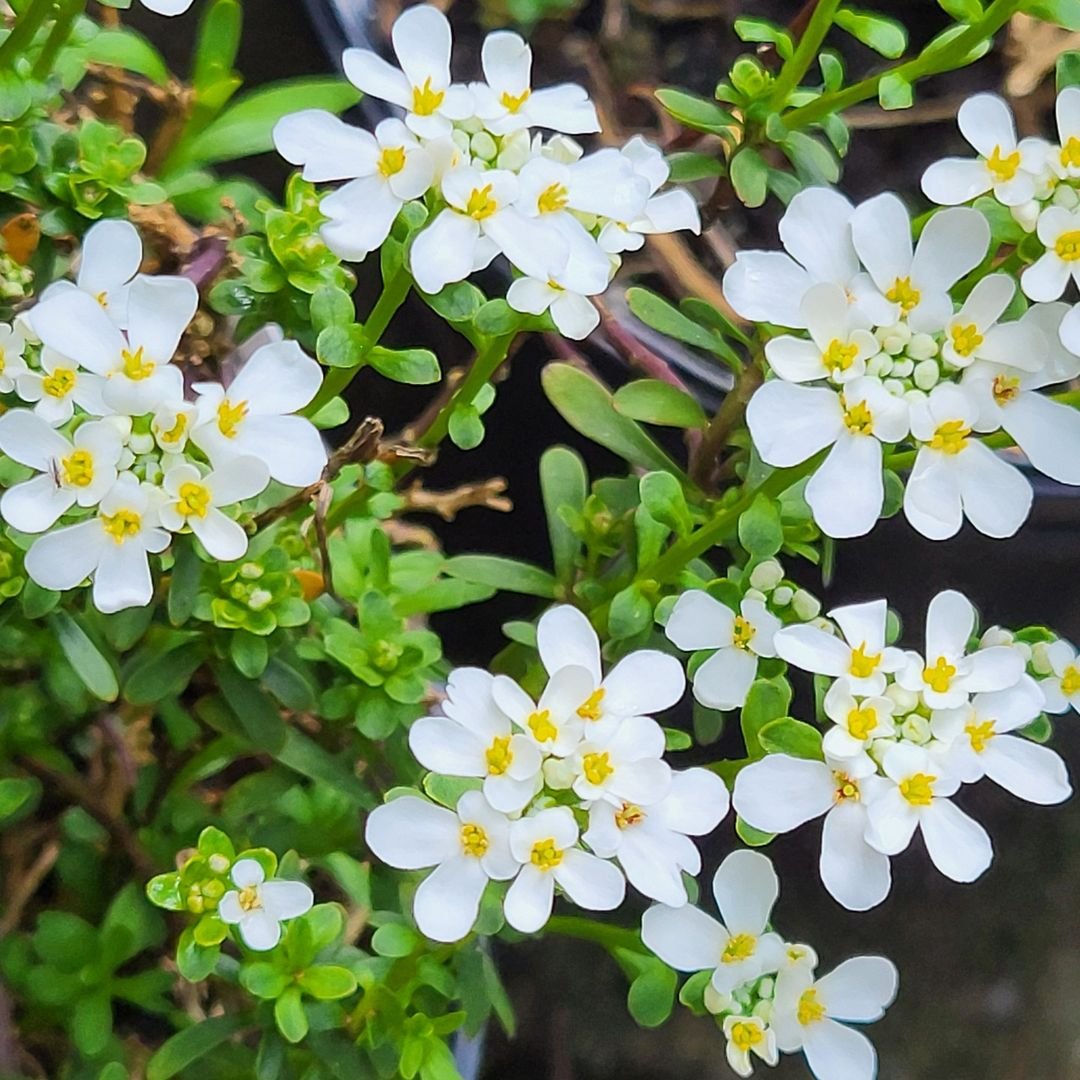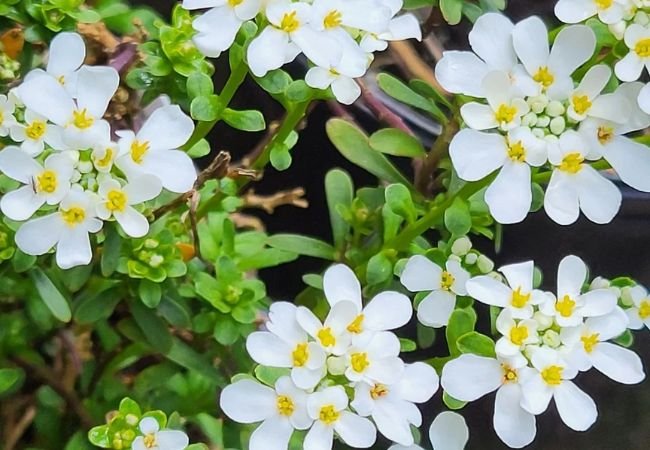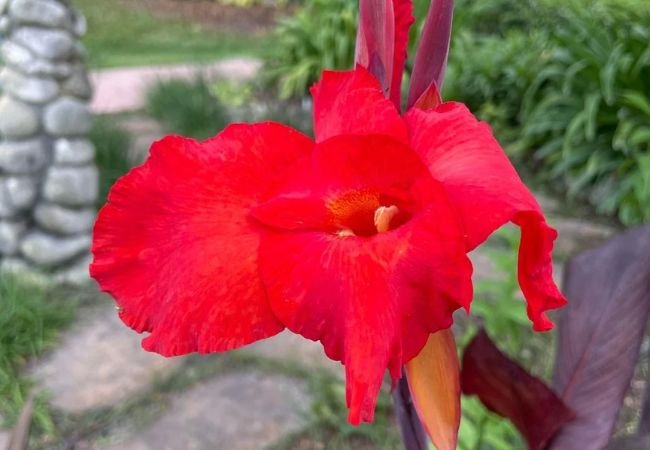Learn about Candytuft, an easy-to-grow flowering plant perfect for USA gardens. Discover its features, care tips and benefits in this simple guide to adding beauty to your outdoor space.
Have you ever heard of the Candytuft flower? This pretty plant is easy to grow and can make your garden look great. Let’s learn more about it!
Certainly! Here’s a chart with information about the Candytuft flower:
| Aspect | Details |
|---|---|
| Botanical Name | Iberis sempervirens |
| Common Name | Candytuft |
| Plant Type | Perennial |
| Hardiness Zone | Zones 3-9 |
| Sun Exposure | Full sun to part shade |
| Soil Type | Well-drained, alkaline soil |
| Watering Needs | Moderate; regular watering, drought-tolerant once established |
| Growth Habit | Spreading, mat-forming |
| Height/Spread | 6-12 inches tall / 12-24 inches spread |
| Special Features | Evergreen foliage, attracts pollinators, deer resistant |
What is Candytuft?

Candytuft is a small flowering plant. Its scientific name is Iberis, but people call it Candytuft because its flower clusters look like little tufts of candy. This plant comes from southern Europe, but now it grows in many parts of the world.
How Candytuft Looks
- Flowers: Candytuft has small flowers that grow in clusters. They’re usually white, but you can also find pink and purple ones.
- Leaves: The leaves are small, narrow, and green. They stay on the plant all year.
- Size: Candytuft plants are usually about 6 to 12 inches tall and can spread up to 18 inches wide.
Growing Candytuft in Your Garden
If you want to grow Candytuft, here’s what you need to know:
- Sunlight: Candytuft likes full sun, which means at least 6 hours of direct sunlight each day.
- Soil: It grows best in well-draining soil. This means the soil shouldn’t stay wet for too long.
- Water: Water your Candytuft regularly, but don’t overdo it. Let the soil dry a bit between waterings.
- Planting time: You can plant Candytuft in spring or fall.
Candytuft is great for:
- Rock gardens
- Borders along walkways
- Ground cover in sunny areas
Taking Care of Your Candytuft
To keep your Candytuft looking good:
- Trim it after it flowers to keep it neat and encourage more blooms.
- In cold areas, cover the plants with mulch in winter to protect them.
- Feed your Candytuft with a balanced fertilizer in spring.
Benefits of Candytuft
- Easy to grow: Even if you’re new to gardening, you can grow Candytuft.
- Attracts pollinators: Bees and butterflies love Candytuft flowers.
- Deer resistant: Deer usually don’t eat Candytuft, so it’s good for gardens in areas with deer.
Common Problems
While Candytuft is generally easy to care for, it can have some issues:
- Root rot: This happens if the soil is too wet. Make sure your soil drains well.
- Aphids: These tiny bugs can bother Candytuft. You can wash them off with water or use insecticidal soap.
Fun Facts About Candytuft
- The name “Candytuft” doesn’t come from candy, but from Candia, the old name for Crete, where the plant was first found.
- Candytuft is part of the mustard family, just like broccoli and cabbage!
Where to Buy Candytuft
You can find Candytuft plants or seeds at most garden centers. You can also order them online from places like:
Remember to check if Candytuft grows well in your area before buying.
Candytuft is a great choice for gardeners who want a pretty, low-maintenance plant. With its sweet-looking flowers and easy care, it can be a wonderful addition to any garden. Why not give it a try in your outdoor space?
For more gardening tips and plant care guides, visit usagardenhub.com.






